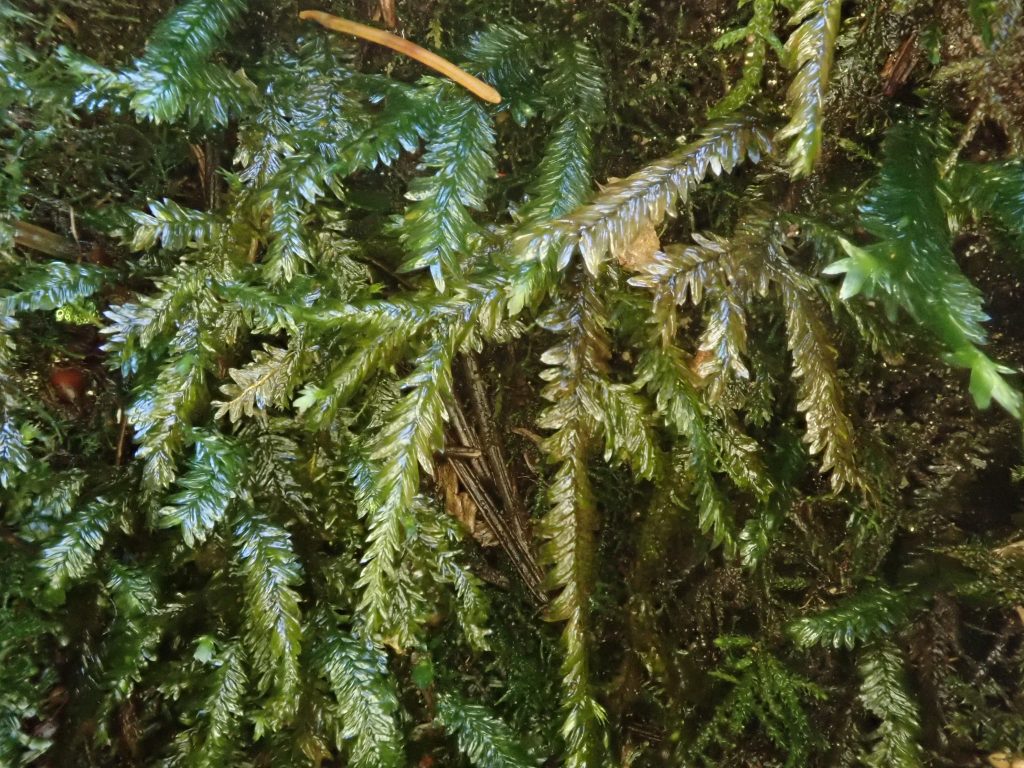
Moss identification is kicking my butt. It’s hard enough trying to learn all of these new terms and structures. But my problem isn’t so much that I’m ignorant, although that is problematic enough. It’s the thinking I know stuff that causes the bigger problems!
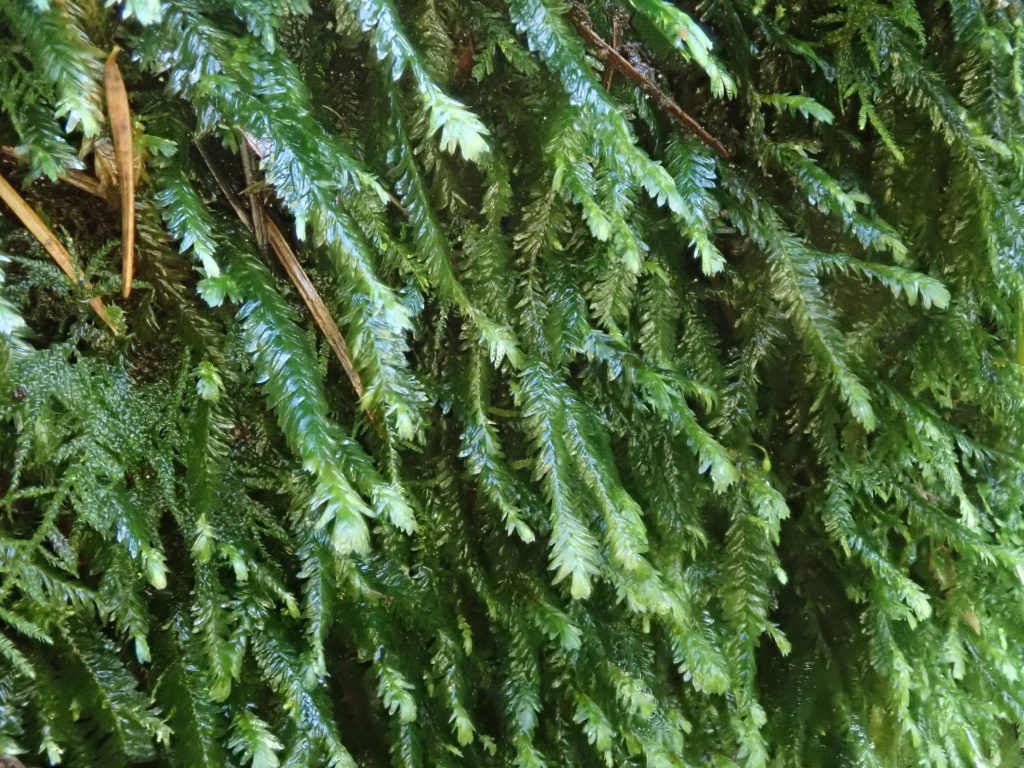
I learned a few lessons trying to identify this moss. For one thing I was shown, yet again, that I’m nowhere near good enough at moss id to follow a hunch and start out there in the key. Because then I start trying to shoehorn characteristics to fit that species. Based on my unsubstantiated belief that this was a Fissidens sp. (of which I’ve only ever seen photos) I assumed it was distichous (leaves in two ranks) without really looking close, when in fact it is only complanate (lying in one plane, but spirally inserted). My next mistake, since I had already foolishly decided it was a Fissidens, was to assume that the convex leaf base was actually vaginate. There were a few other square pegs I hammered into round holes, which led me to conclude that it was Fissidens adianthoides. But since there are a whole bunch of Fissidens, and I was worn out, probably from trying to justify my errors, I decided to come back to it the next day.
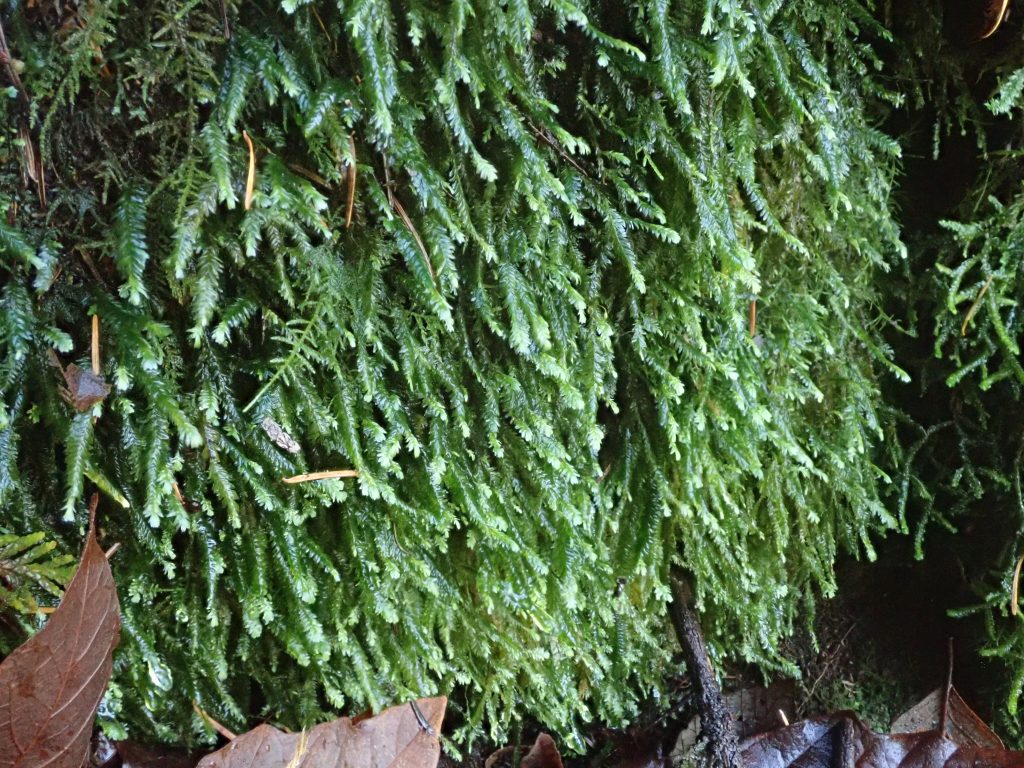
By then, of course, my slide had dried out, but I made another one and popped it under the microscope. Where I found different shaped leaves, with untoothed rather than coarse toothed margins, and a short, doubled costa instead of the long single costa I’d been seeing. Now I was really confused! I had cleaned the specimen and removed fragments from other mosses, and the rest of the shoot I’d made the new slide from looked very similar to everything else. Still clinging stubbornly to my notion this was Fissidens I combed the literature for mention of dimorphic leaves in Fissidens. Finding nothing I threw in the towel and emailed photos to Terry McIntosh. Who responded that it was Porotrichum (now Dannorrisia) bigelovii. When I looked up that moss I could clearly see my errors, as well as finding a reference to occasional ovate, untoothed, stem leaves, with a short, doubled costa. Hopefully the embarrassment and frustration of this debacle will convince me to at least look at a map before blithely striding down what I assume to be the correct path. Well, at least for tomorrow.
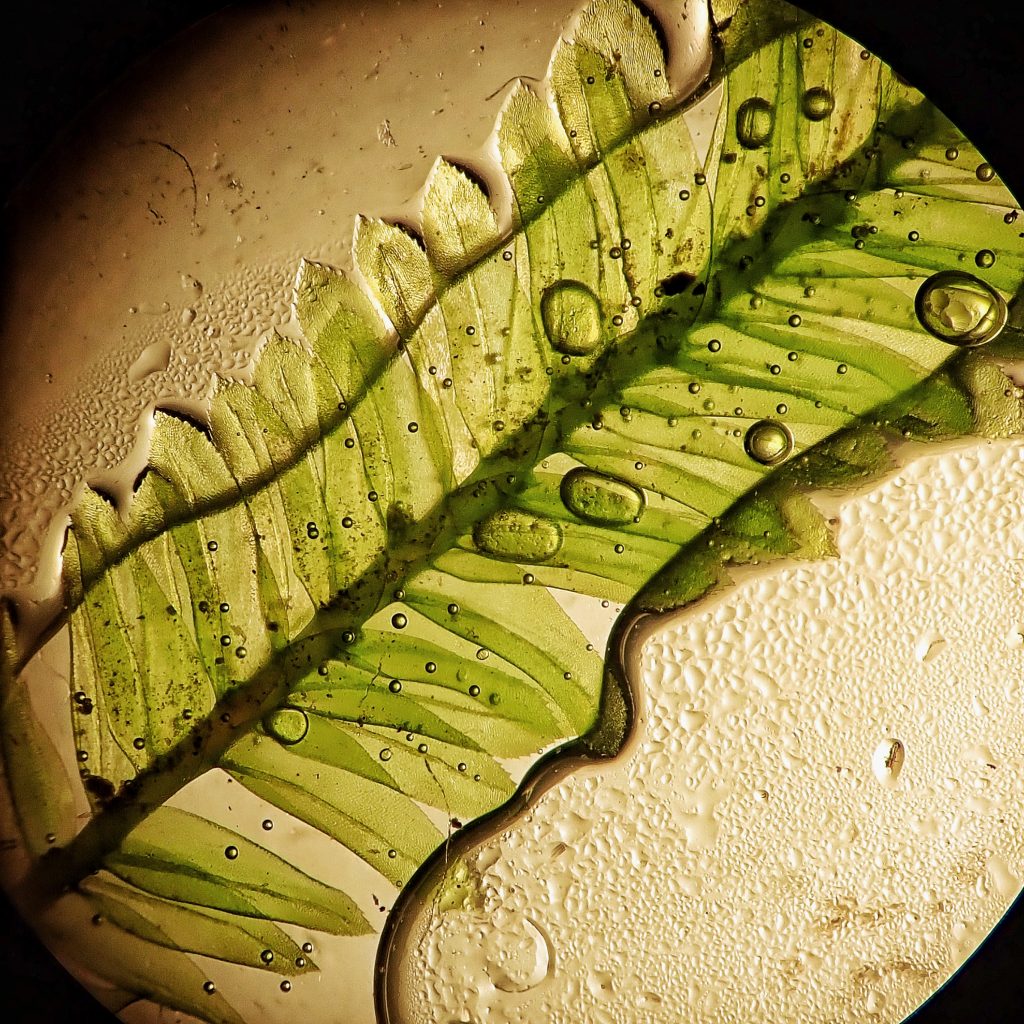
Description-Complanate, fairly translucent leaves, with most branch leaves about 3x as long as wide, and large coarse teeth on the distal margins; costa doesn’t reach leaf apex; Stems up to 4cm long; often forms glistening mats.
Similar species– Fissidens spp. have leaves attached in two distinct rows, with half the leaf base clasping the stem (vaginate), and half free. Thamnobryum spp. have costa that reaches leaf tip.
Habitat– On shaded soil, rock, tree roots, or logs, along streams and wet cliffs, in low to mid elevations
Range– Region wide in appropriate habitat. More common west of the Cascades
Reproductive timing– Spring and summer
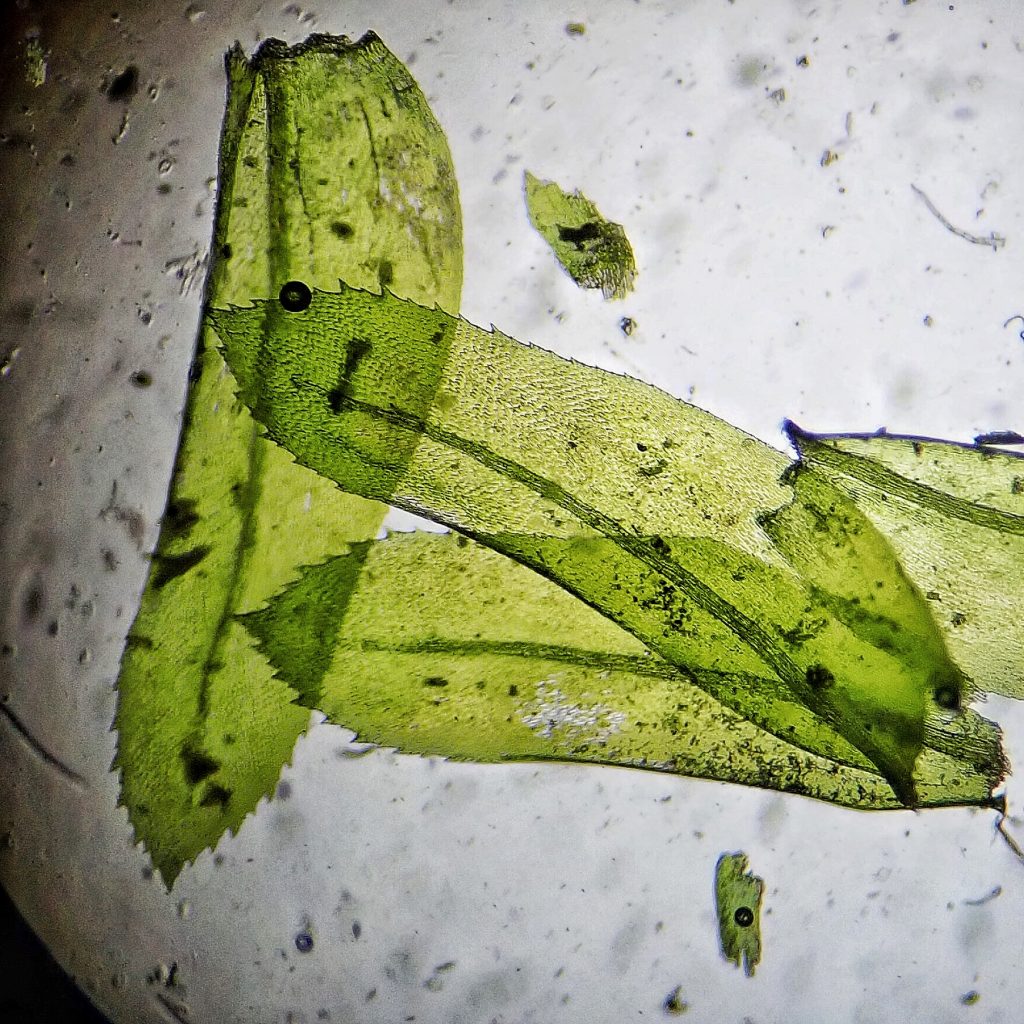
Etymology of names–Dannorrisia honors Dan Norris (1933-2017), an influential figure in bryology, who passed away three years ago. Recent molecular genetics studies have shown that this species belongs in it’s own monotypic genus. The species epithet seems to be a latinization of Bigelow, and probably refers to John Milton Bigelow (1804-1878), who collected extensively in the western USA, and particularly in California, and made a huge contribution to the moss flora of that state.
Porotrichum still exists as a genus of mostly tropical mosses, and means ‘hole’ and ‘hair’, and refers to perforated segments in the peristome.
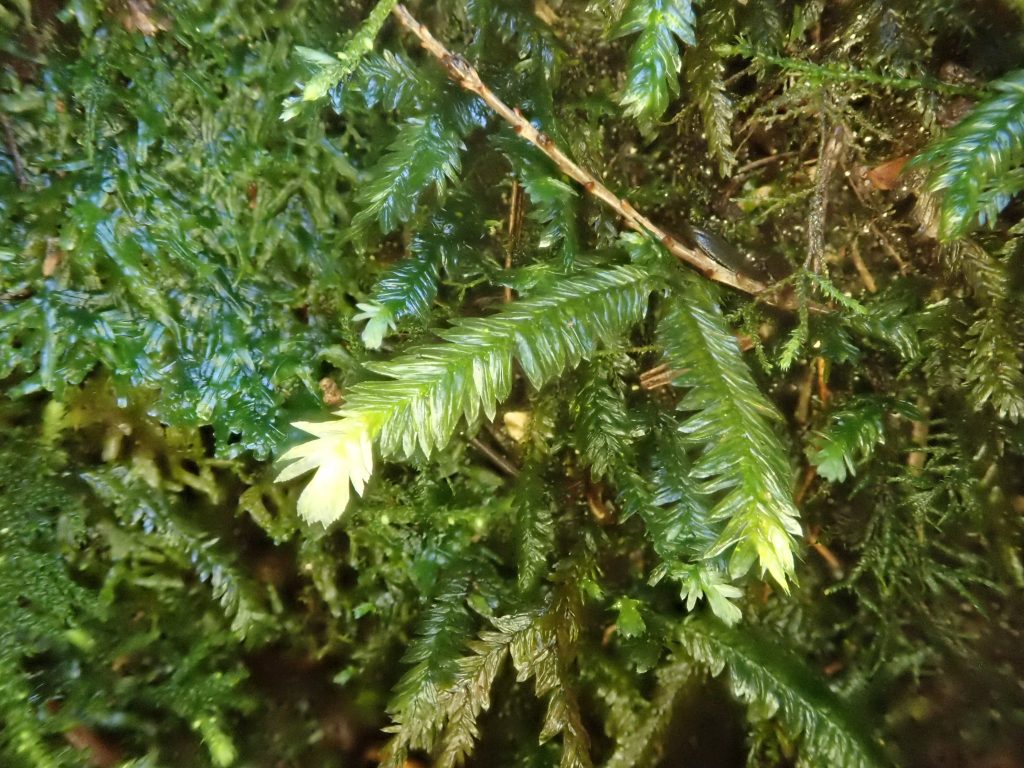
http://www.efloras.org/florataxon.aspx?flora_id=1&taxon_id=250099277
https://ucjeps.berkeley.edu/cgi-bin/get_moss_treatment.pl?taxon=Porotrichum%20bigelovii
http://fieldguide.mt.gov/speciesDetail.aspx?elcode=NBMUS5U010
https://bryophyteportal.org/portal/taxa/index.php?taxauthid=1&taxon=160481&clid=75
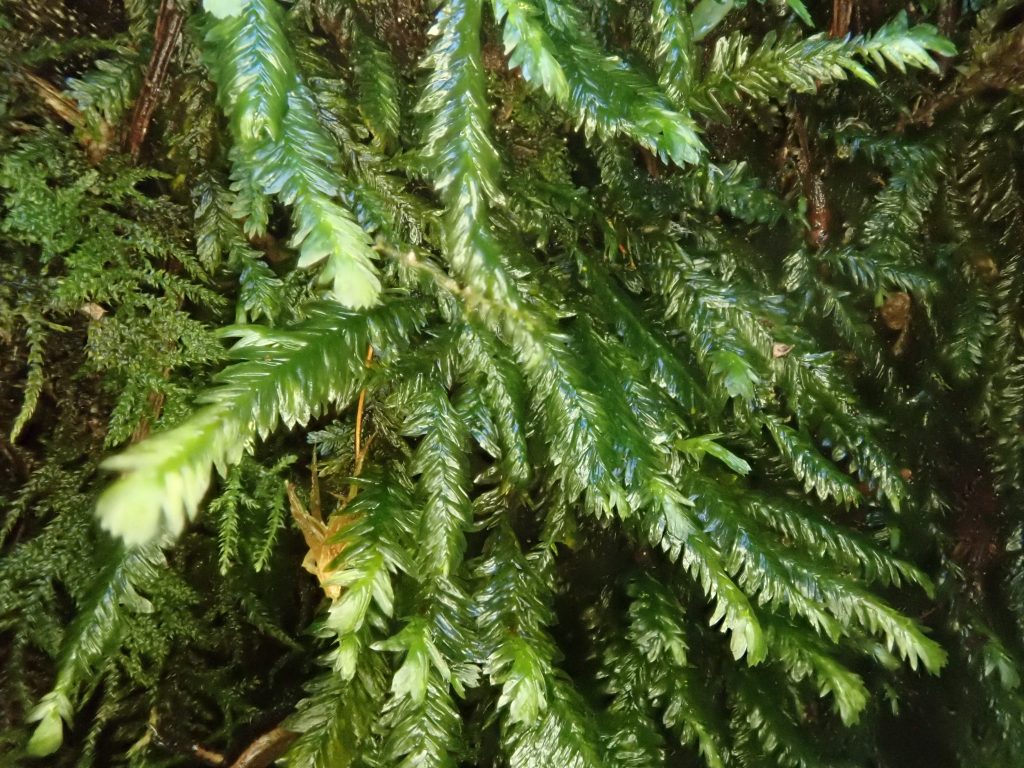
Just lovely!
Enjoyed reading your “process”. It can be applied to so many things. Good reminder! Thank you ☺️